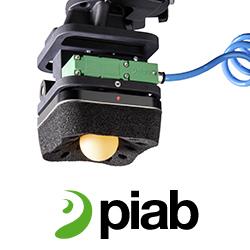Hoffmann+Krippner Shows How to Pick the Right Potentiometer Sensor for Your Application
New White Paper for Developers of Industrial Automation systems and solutions, medical equipment and devices, kitchen appliances and handheld power tools --- Potentiometers can provide highly precise sensing and measurement for linear or rotary movement
August 19, 2015 - Alpharetta, GA
Hoffmann + Krippner Inc. today posted a new white paper - How to Choose the Right Potentiometer for Reliable Position Sensing. It can be downloaded at http://www.hoffmann-krippner.com/whitepapers.html
Created to help design engineers understand how membrane potentiometer sensors work and how to pick the right type of membrane potentiometer for their project, this new Hoffmann+Krippner white paper covers the various types of potentiometers, potentiometer development history, their various components and materials, and an overview looking at the technical issues of printed potentiometers and foil (membrane)/ The paper also covers the various tech specifications of accuracy and linearity when specifying potentiometers.
"Specifying or designing a potentiometer sensors is a complex challenge for many developers, especially those now looking to create Internet connected devices and solutions," says Jens Kautzor, CEO of Hoffman + Krippner, Inc. "This new guide provides an easy to understand high level look at these technologies as well as a detailed explanation of the most important technical specifications and how to understand them."
Company Background
The Hoffmann + Krippner Group, with sales offices around the globe, specializes in input and output systems as well as sensors. Headquartered in Germany, Hoffmann + Krippner has manufactured German-engineered, high quality products for over 35 years. As the North American member of the Group, Hoffmann + Krippner, Inc. delivers these engineering, design and manufacturing services to the US and Canadian market.
Featured Product

The piCOBOT Electric vacuum generator
Fully electric, slim design and absence of air-tubing and cabling. The new piCOBOT® Electric heads towards another success for Piab's piCOBOT® program. A secondary effect of these achievements is the absence of entangling air tubing and cabling. It simplifies the installation, and as the new piCOBOT® Electric only needs a single connection on the cobot arm, the clean set-up allows a completely unrestricted movement. The new piCOBOT® Electric package will contain plug & play software to fit UR e-series cobots, but many other useful adaptations will be introduced in the coming year
